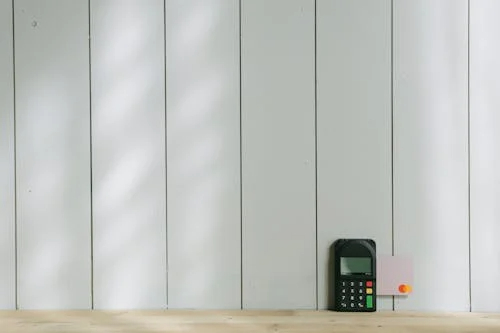In today’s fast-paced world, the pursuit of financial independence is a common goal. Finding creative ways to generate quick capital can be a game-changer, and one such strategy is “couch-flipping”. This involves buying used couches, making necessary repairs or upgrades, and then reselling them for a profit. This article provides a comprehensive guide, rooted in financial education, to help you understand the ins and outs of couch-flipping and how it can potentially boost your financial literacy.
Understanding the Couch-Flipping Market and Its Financial Opportunities
The market for used furniture is surprisingly robust. Demand is driven by a variety of factors, including affordability, environmental consciousness (reusing existing items reduces waste), and the desire for unique, vintage pieces. As reported by the National Retail Federation, the secondhand market is experiencing significant growth, signaling a viable opportunity for entrepreneurs. Couch-flipping, in particular, capitalizes on this trend, offering a relatively low-barrier-to-entry way to participate in the circular economy and generate income. Understanding the supply and demand dynamics in your local area is crucial for success.
Assessing the Local Market for Optimal Profit
Before diving into couch-flipping, it’s essential to conduct thorough market research. Start by identifying the demand for used couches in your area. Check online marketplaces like Facebook Marketplace, Craigslist, and OfferUp to gauge what types of couches are popular, what they’re selling for, and the typical price ranges. Also, visit local thrift stores, consignment shops, and furniture stores to gather price data and identify potential sourcing locations. Understanding the local market trends helps determine which styles, materials, and sizes are most desirable, maximizing your chances of a profitable flip. Always consider the geographic market when analyzing furniture prices.
Financial Planning: Setting Your Budget and Calculating Profit Margins
Effective financial planning is paramount in any entrepreneurial venture, including couch-flipping. Start by establishing a clear budget. Determine the maximum amount you’re willing to spend on each couch, including the purchase price, materials for repairs, and any transportation costs. Remember to factor in potential costs for cleaning supplies, upholstery fabric, or other relevant expenses. It’s essential to set a realistic budget that you can stick to. This process directly impacts your cash flow management.
Calculating Profit Margins and Return on Investment (ROI)
Accurate profit margin calculations are crucial. The profit margin is the difference between the selling price and the total cost (purchase price + repair costs + any other expenses). Use this formula: (Selling Price – Total Costs) / Selling Price. For example, if you buy a couch for $100, spend $50 on repairs, and sell it for $300, your profit is $150, and your profit margin is 50%. It is essential to calculate the return on investment (ROI). This is calculated as (Profit / Investment) * 100. A higher ROI indicates a more profitable venture. For example, $150 profit/$150 investment = 100% ROI. The goal should be to aim for the best profitability ratios.
Sourcing and Inspecting Couches: Finding the Right Pieces
The next step involves sourcing couches. The best places to find potential flips are online marketplaces, estate sales, garage sales, and thrift stores. Focus on identifying couches that have good structural integrity but may need cosmetic improvements. Look for solid frames, functional springs, and overall clean lines. Avoid couches with significant structural damage, such as broken frames or severely damaged cushions, as these may require extensive repairs that erode your profit margin. This phase requires a keen eye for assessing the intrinsic value of an item.
Inspecting for Damage, Cleaning, and Structural Integrity
When inspecting a potential flip, thoroughly examine the couch for any damage. Check the frame for loose joints or broken pieces. Inspect the cushions for tears, stains, or sagging. Carefully assess the upholstery for wear and tear, such as fading, pilling, or holes. Test the springs for their bounce and resilience. Finally, check for any signs of pests, such as bed bugs or mold. Make sure you can remove any stains and consider replacement value versus repairs before buying. Always prioritize cleaning and sanitizing the couch before beginning any repairs. You can use appropriate cleaning agents and techniques to remove dirt, stains, and odors.
Restoration and Improvement: Making the Couch Marketable
Restoration is a crucial aspect of couch-flipping. This involves a range of tasks, including cleaning, repairing damage, and potentially reupholstering or upgrading the couch to improve its appearance and value. The scope of restoration will vary depending on the condition of the couch and the desired profit margin. Consider the depreciation of materials used. Aim for a blend of cost-effectiveness and quality. The goal is to provide an acceptable quality piece at an affordable price. Always consider the time value of money when deciding whether to invest in a couch flip.
Repairing, Reupholstering, and Adding Value to the Couch
Minor repairs might include tightening loose joints, replacing missing hardware, or touching up scratches on the frame. Significant damage might require more advanced skills or professional help. For the cushions, you can spot clean and replace the filling. Reupholstering can significantly enhance the appearance and value of the couch. Consider reupholstering only if the existing fabric is severely damaged or outdated. When selecting fabrics, consider durability, stain resistance, and style. Explore creative ways to add value, such as adding decorative pillows, throw blankets, or minor aesthetic upgrades. This is where you can use your human capital to make the biggest impact.
Marketing and Sales: Maximizing Your Profits
Once you’ve restored the couch, it’s time to market and sell it. The most effective platforms for selling used furniture include online marketplaces like Facebook Marketplace, Craigslist, OfferUp, and local classified ads. Create high-quality listings that showcase the couch’s best features. Use clear, well-lit photos from multiple angles, highlighting any repairs or improvements you made. Write a detailed and accurate description, including the dimensions, materials, and any unique features. Be honest about any imperfections. Ensure the price is competitive but reflective of the couch’s condition and your efforts. Be prepared to negotiate, but know your minimum acceptable price.
Pricing Strategies and Effective Listing Practices
Pricing is a crucial part of marketing. Research the prices of similar couches in your area to determine a competitive price point. Consider the original cost of the couch, your repair costs, and your desired profit margin when setting the price. Be willing to adjust the price based on market demand and offers. Use clear and compelling language in your listings. Highlight the couch’s best features, and consider using keywords that potential buyers might search for. Consider including a call to action, such as “Message me for more details” or “Make an offer.” Be ready to respond promptly to inquiries and be professional in your communication. This is an important aspect of your business plan.
Legal and Financial Considerations: Operating Ethically
While couch-flipping can be a lucrative venture, it’s essential to operate ethically and responsibly. Ensure you comply with local laws and regulations regarding the sale of used furniture. Be transparent with buyers about the condition of the couch, disclosing any repairs or imperfections. Avoid misrepresenting the couch’s condition. Keep accurate records of all transactions, including purchase prices, repair costs, and selling prices. This information will be vital for financial tracking and filing taxes. Seek advice from a tax professional about your tax obligations. This practice ensures you are operating in a manner that is in line with financial regulations.
Tax Obligations, Insurance, and Liability
As a couch-flipper, you are likely considered self-employed. Therefore, you’re responsible for paying self-employment taxes, including Social Security and Medicare taxes. You will likely be required to file a Schedule C form with your federal income tax return to report your income and expenses. Consider setting aside a portion of your profits to cover your tax obligations. Although this business is typically low-risk, you might want to consider liability insurance to protect yourself from potential claims or issues. Keep your transactions safe and secure and protect your personal information. Understanding your tax bracket is crucial.
Scaling Your Couch Flipping Business: Expanding Operations
Once you gain experience and build a reputation, consider ways to scale your couch-flipping business. This might involve expanding your sourcing network, streamlining your repair process, or hiring help. To expand your sourcing, consider partnering with other local furniture sellers or wholesalers. Invest in essential tools and equipment to improve your repair efficiency. Automate certain tasks, such as creating listings or scheduling pickups, by using online tools. Manage capital assets to increase your net worth.
Key Takeaways
- Thorough Research: Conduct in-depth market research to identify demand, price points, and desirable styles.
- Budgeting is Key: Create a detailed budget that accounts for all expenses, including purchase prices, repair costs, and transportation.
- Profit Margin Calculations: Accurately calculate profit margins and ROI to ensure your ventures are financially viable.
- Quality Over Quantity: Prioritize quality repairs and improvements to maximize the couch’s appeal and value.
- Effective Marketing: Create compelling listings with high-quality photos and detailed descriptions to attract buyers.
- Ethical Practices: Operate transparently and legally, keeping accurate records for financial and tax compliance.
Conclusion
Couch-flipping offers a potentially lucrative opportunity for individuals looking to generate quick capital and build financial literacy. By following the principles outlined in this guide – from market research and financial planning to sourcing, restoration, and sales – you can increase your chances of success. Remember that this is a business and requires strategic planning, work, and attention to detail. With the right approach, couch-flipping can evolve from a side hustle into a sustainable source of income. Apply these principles to your own financial planning and build towards a financially secure future. Start flipping couches today and build a portfolio of successful flips!
Frequently Asked Questions
Q: Is couch-flipping a profitable venture for everyone?
The profitability of couch-flipping depends on several factors, including your ability to find good deals, your repair skills, and your marketing effectiveness. While it offers potential, success isn’t guaranteed and requires dedication, market knowledge, and some financial acumen. Consider it a small business venture.
Q: How much capital do I need to start couch-flipping?
The initial investment can be relatively low. You’ll need funds for your first couch purchase, materials for repairs (e.g., fabric, cleaning supplies), and transportation. A few hundred dollars can be enough to get started, but the amount can grow as you expand. Always diversify your investments.
Q: What if I’m not handy? Can I still flip couches?
Yes! While repair skills are helpful, they are not always necessary. You can focus on sourcing couches that need minimal repair or that can be flipped with cosmetic improvements, like cleaning and reupholstering. You can also consider hiring skilled workers for tasks like frame repairs or upholstery. Focus on your core competency.
Q: Where’s the best place to find couches to flip?
The best places to source couches include online marketplaces (Facebook Marketplace, Craigslist, OfferUp), thrift stores, estate sales, garage sales, and local auctions. Focus on finding quality pieces at prices that offer room for profit. Due diligence is very important.
Q: How long does it take to flip a couch and make a profit?
The timeline for a flip varies depending on the condition of the couch, the extent of repairs, and the time it takes to find a buyer. Some flips can be completed in a week or less, while others may take several weeks. Effective marketing can speed up the selling process. This is also a great way to understand the capital cycle of a business.
Q: Is it legal to sell used furniture?
Yes, it is generally legal to sell used furniture. However, you must comply with local regulations, which may include requirements for disclosing the condition of the furniture, as well as any relevant tax obligations. Make sure you understand consumer protection laws in your area.
Q: What are the biggest mistakes to avoid when couch-flipping?
Common mistakes include overspending on purchases, underestimating repair costs, failing to factor in transportation expenses, misrepresenting the couch’s condition, and not adequately pricing your items. Always keep track of your financial statements.



